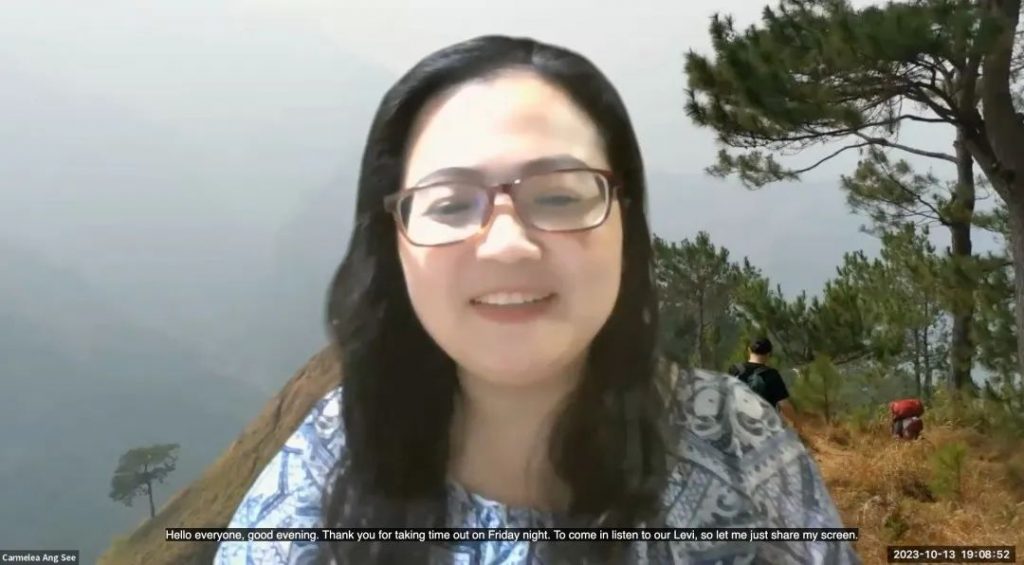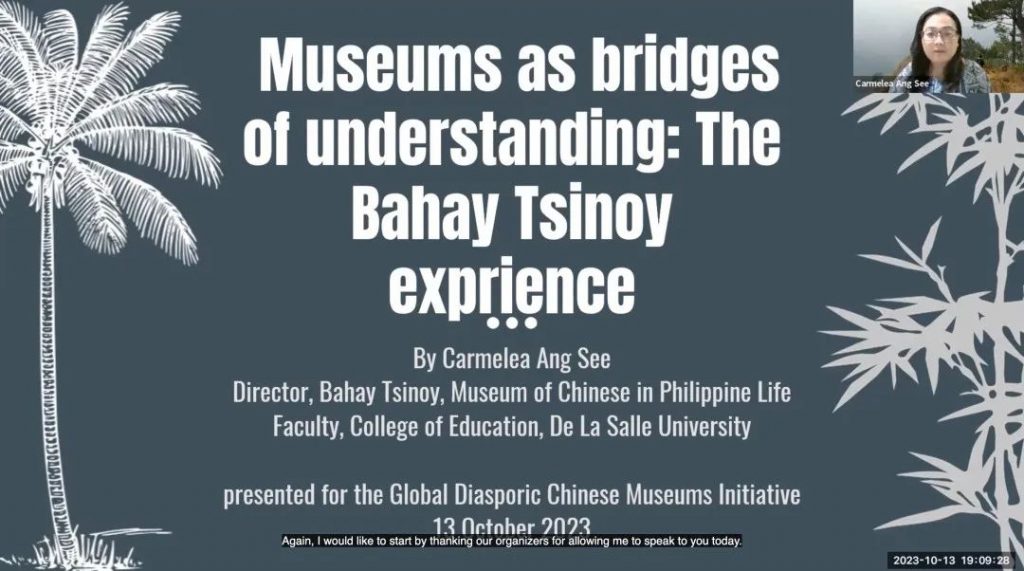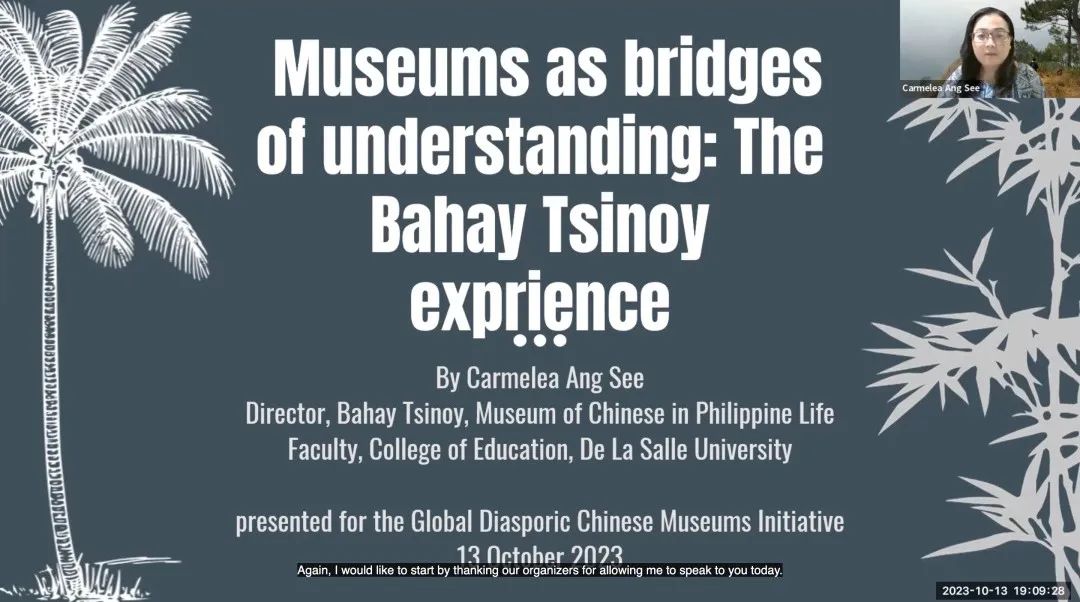The Bahay Tsinoy Experience
Fatima Latif
Project research assistant and postgraduate student in MA Creative Writing: Writing the City, University of Westminster
In a world marked by diversity and ongoing societal transformations, the role of museums extends beyond the mere display of artefacts and historical remnants. They become bridges, connecting communities, and fostering understanding, a theme eloquently highlighted during the insightful talk by Ms. Carmelea Ang See, Director of Bahay Tsinoy, the Museum of Chinese in Philippine Life.
The talk took place via Zoom on 13 October 2023. It was organized as part of the ‘Global Diasporic Chinese Museums Network Initiative’ funded by AHRC. It was hosted by Dr. Yow Cheun Hoe, Director of the Chinese Heritage Centre at Nanyang Technological University, and attracted over 60 participants.
Ms. Carmelea Ang See shared profound insights, emphasizing the critical distinction between Tsinoys and the new immigrants from mainland China, illustrating the pivotal role of Bahay Tsinoy in this context.The talk then delved into the historical narrative of the Chinese in the Philippines, recounting a saga marked by hardships, expulsions, and tragic massacres. Ms. Ang See’s narrative highlighted the enduring resilience of the Chinese community, navigating expulsion and returning to their villages with nothing. Despite these tribulations, their diligence and contributions earned them the trust of the Spanish government. Under American rule in the Philippines, the Chinese faced discrimination despite economic success, forming a chamber of commerce. Their resilience amid racial tensions and the fight for independence marked a complex chapter in their history as temporary residents.
The struggle to balance being fully Filipino while retaining Chinese heritage was articulated as a crucial aspect of the Tsinoys’ identity.
Against the historical background of Chinese immigration to the Philippines, Ms. Ang See introduced the efforts of Bahay Tsinoy in expanding its outreach beyond the physical museum. Initiatives such as lectures, talks, and collaborations within academia and development organizations serve as a conduit to bridge racial and social gaps.The museum developed affordable and transportable exhibitions, collaborating with the Federation of Philippine Chinese Schools to take these displays to schools and clan associations across the country. For instance, in celebration of King Sulu’s 600th anniversary visit to China in 1417, the museum curated a special exhibition that travelled to 30 institutions in the Philippines. Furthermore, through collaboration with the Guangdong Provincial Museum, the Philippine-Chinese History Museum extended the exhibition to Guangzhou, fostering cultural exchanges and strengthening ties between China and the Philippines.


The engaging discussion following the presentation included queries and comments from both the host and the audience. Stimulating conversations focused on the museum’s role as a bridge that extends beyond its physical walls, emphasizing its significance in showcasing the presence and contributions of migrants in the country, as well as the museum’s representations and further means of engagement.
As the dialogue progressed, attention turned towards representations of Chinese ethnicities in the museum, with Ms. Ang See revealing plans for a contemporary section. The involvement of the audience, including questions about volunteerism and the diverse ethnic, generational, and educational backgrounds of the attendees, further enriched the exchange.
The event concluded with remarks from the host, highlighting the upcoming talk on November 28th, promising an equally enriching conversation with speakers Ms. Yue Ma and Mr. Herb Tam, Director of Exhibitions at the Museum of Chinese in America.
In a world shaped by multifaceted identities and rich cultural tapestries, Bahay Tsinoy stands as a testament to the power of museums as catalysts for understanding, acceptance, and unity. Through its dedication to preserving history and fostering dialogue, it makes a unique contribution to cultural inclusivity and understanding in the Philippines and beyond.
- Museums as Bridges of Understanding - 3 November 2023
- Museum Across Borders - 31 August 2023
